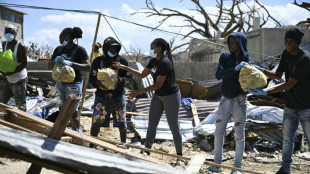
-
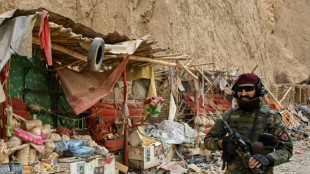 Reeling from earthquakes, Afghans fear coming winter
Reeling from earthquakes, Afghans fear coming winter
-
Ronaldo reveals emotional retirement will come 'soon'

-
 Munich's surfers stunned after famed river wave vanishes
Munich's surfers stunned after famed river wave vanishes
-
Iran commemorates storming of US embassy with missile replicas, fake coffins

-
 Gauff sweeps Paolini aside to revitalise WTA Finals defence
Gauff sweeps Paolini aside to revitalise WTA Finals defence
-
Shein vows to cooperate with France in probe over childlike sex dolls

-
 Young leftist Mamdani on track to win NY vote, shaking up US politics
Young leftist Mamdani on track to win NY vote, shaking up US politics
-
US government shutdown ties record for longest in history

-
 King Tut's collection displayed for first time at Egypt's grand museum
King Tut's collection displayed for first time at Egypt's grand museum
-
Typhoon flooding kills over 40, strands thousands in central Philippines
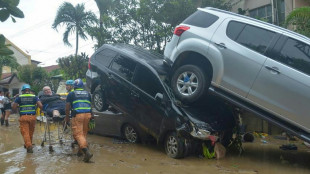
-
 Trent mural defaced ahead of Liverpool return
Trent mural defaced ahead of Liverpool return
-
Sabalenka to face Kyrgios in 'Battle of Sexes' on December 28

-
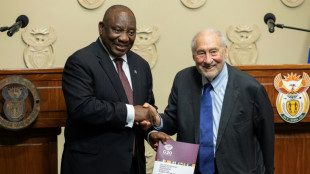 Experts call for global panel to tackle 'inequality crisis'
Experts call for global panel to tackle 'inequality crisis'
-
Backed by Brussels, Zelensky urges Orban to drop veto on EU bid

-
 After ECHR ruling, Turkey opposition urges pro-Kurd leader's release
After ECHR ruling, Turkey opposition urges pro-Kurd leader's release
-
Stocks drop as tech rally fades
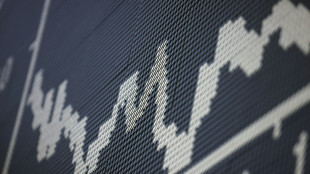
-
 UK far-right activist Robinson cleared of terror offence over phone access
UK far-right activist Robinson cleared of terror offence over phone access
-
World on track to dangerous warming as emissions hit record high: UN

-
 Nvidia, Deutsche Telekom unveil 1-bn-euro AI industrial hub
Nvidia, Deutsche Telekom unveil 1-bn-euro AI industrial hub
-
Which record? Haaland warns he can get even better

-
 Football star David Beckham hails knighthood as 'proudest moment'
Football star David Beckham hails knighthood as 'proudest moment'
-
Laurent Mauvignier wins France's top literary award for family saga

-
 Indian Sikh pilgrims enter Pakistan, first major crossing since May conflict
Indian Sikh pilgrims enter Pakistan, first major crossing since May conflict
-
Former US vice president Dick Cheney dies at 84

-
 Fiorentina sack Pioli after winless start in Serie A
Fiorentina sack Pioli after winless start in Serie A
-
Stocks drop as traders assess tech rally
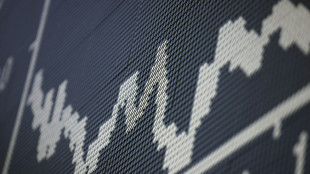
-
 Oscar-winning Palestinian films daily 'Israeli impunity' in West Bank
Oscar-winning Palestinian films daily 'Israeli impunity' in West Bank
-
Spain's Telefonica shares drop on dividend cut, net loss

-
 Fierce mountain storms kill nine in Nepal
Fierce mountain storms kill nine in Nepal
-
Divisive Czech cardinal Dominik Duka dies at 82

-
 Shein vows to cooperate with France in sex doll probe
Shein vows to cooperate with France in sex doll probe
-
EU in last-ditch push to seal climate targets before COP30

-
 Finnish ex-PM Marin says her female cabinet faced torrent of sexism
Finnish ex-PM Marin says her female cabinet faced torrent of sexism
-
Sudan army-backed council to meet on US truce proposal: govt source
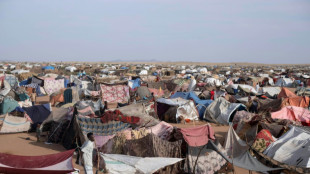
-
 BP profit surges despite lower oil prices
BP profit surges despite lower oil prices
-
Shein vows to cooperate with France in childlike sex doll probe

-
 National hero proposal for Indonesia's Suharto sparks backlash
National hero proposal for Indonesia's Suharto sparks backlash
-
Indian great Ashwin out of Australia's BBL after knee surgery

-
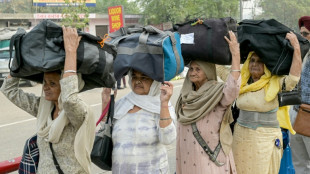 Indian Sikh pilgrims enter Pakistan, first major crossing since May conflict: AFP
Indian Sikh pilgrims enter Pakistan, first major crossing since May conflict: AFP
-
Asian markets slip as traders eye tech rally, US rate outlook
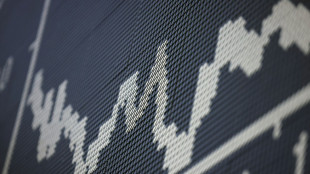
-
 Nintendo hikes Switch 2 annual unit sales target
Nintendo hikes Switch 2 annual unit sales target
-
Typhoon flooding kills 5, strands thousands in central Philippines

-
 Jobe Bellingham finding his feet as Dortmund head to City
Jobe Bellingham finding his feet as Dortmund head to City
-
US civil trial to hear opening arguments on Boeing MAX crash

-
 Jamie Melham on Half Yours only second woman to win Melbourne Cup
Jamie Melham on Half Yours only second woman to win Melbourne Cup
-
Myanmar scam hub sweep triggers fraudster recruitment rush

-
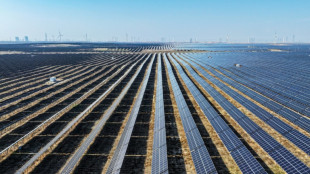 Biggest emitter, record renewables: China's climate scorecard
Biggest emitter, record renewables: China's climate scorecard
-
Floods strand people on roofs as typhoon pounds Philippines
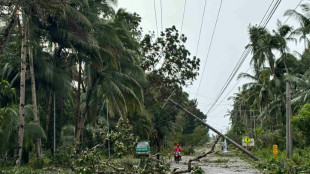
-
 Asian markets swing as trades eye tech rally, US rate outlook
Asian markets swing as trades eye tech rally, US rate outlook
-
South Korea to triple AI spending, boost defence budget


What do scientists hope to learn from total solar eclipse in US?
When a rare total solar eclipse sweeps across North America on April 8, scientists will be able to gather invaluable data on everything from the Sun's atmosphere to strange animal behaviors -- and even possible effects on humans.
It comes with the Sun near the peak of its 11-year solar cycle, setting the stage for a breathtaking display: The corona will glow spectacularly from the Moon's silhouette along the path of totality, a corridor stretching from Mexico to Canada via the United States.
Total solar eclipses offer "incredible scientific opportunities," NASA Deputy Administrator Pam Melroy told a press conference this week about the celestial event.
The US space agency is one of the institutions at the ready for the eclipse, with plans to launch so-called "sounding rockets" to study the effects on Earth's upper atmosphere.
Here is a look at what researchers are hoping to learn from the upcoming eclipse:
- Sun's atmosphere -
When the Moon passes directly in front of the Sun and blocks it, the elusive outermost edge of the Sun's atmosphere, or corona, will be visible "in a very special way," Melroy said Tuesday.
"Things are happening with the corona that we don't fully understand," she said.
The heat within the corona intensifies with distance from the Sun's surface -- a counterintuitive phenomenon that scientists struggle to fully comprehend or explain.
Solar flares, a sudden explosion of energy that releases radiation into space, take place in the corona as do solar prominences, enormous plasma formations that loop out from the Sun's surface.
During an eclipse, the bottom most part of the corona -- where a lot of this activity occurs -- is more clearly visible than when using specialized instruments to block the central part of the Sun, offering a golden opportunity for study, said Shannon Schmoll, director of the Abrams Planetarium at Michigan State University.
Researchers are particularly thrilled about the Sun being near the peak of its 11-year cycle.
"The chance we're going to see something amazing is very high," Melroy said.
- Earth's atmosphere -
The total eclipse also will afford scientists a chance to study changes in part of the Earth's upper atmosphere known as the ionosphere, important because it affects radio waves used for communication and navigation.
"Disturbances in this layer can cause issues with GPS and communications," said Kelly Korreck, the eclipse program manager at NASA headquarters.
The ionosphere, which is where Earth's atmosphere meets space, is affected by the Sun, which electrically charges the particles there during the day.
NASA's three sounding rockets will be launched before, during and just after the eclipse from Virginia to measure these changes.
The major decrease in sunlight provoked by the eclipse -- more rapid and localized than a simple sunset -- should allow researchers to learn more about how light affects the ionosphere so they can better predict potential problematic disruptions.
- Animal behaviors -
Startling animal behavior has been noted during eclipses: Giraffes have been seen galloping, while roosters and crickets can start crowing and chirping.
Beyond the drop in sunlight, temperatures and wind -- conditions to which animals are sensitive -- can also decrease significantly during an eclipse.
Andrew Farnsworth, a researcher in ornithology at Cornell University in New York state, studies how eclipses affect birds, using weather surveillance radar to detect birds in flight.
During the last total solar eclipse visible from the United States in August 2017, scientists observed a "decline in the number of animals flying around," Farnsworth told reporters.
The 2017 eclipse disrupted the daily activities of insects and birds, but did not trigger usual animal nocturnal behaviors such as birds migrating or bats emerging, the expert said.
This time around, birds might be more apt to migrate during the eclipse, given that it's in April, he said.
"These kinds of patterns -- they're important for understanding the ways animals perceive their worlds," Farnsworth said.
- Human wonder -
"Eclipses have a special power. They move people to feel a kind of reverence for the beauty of our universe," NASA Administrator Bill Nelson told reporters.
Researchers studied this feeling of awe in 2017, using data from nearly three million users of Twitter, now called X.
Those in the so-called "path of totality" tended to use the pronoun "we" (as opposed to "I") and express concern about other people, according to Paul Piff, a professor of psychology at the University of California, Irvine.
"What we're finding is that experiences that bring about awe... seem to attune people and connect us to one another, to connect us to entities that are larger than ourselves," Piff said.
This year, he plans to study if the experience has any effect on political divisions in society.
- Citizen scientists -
About 40 citizen science projects are planned around the eclipse, from using a phone app to register the temperature and cloud cover to recording ambient noise during the event.
"We encourage you to help NASA observe the sights and sounds around you," Nelson said.
Th.Berger--AMWN
